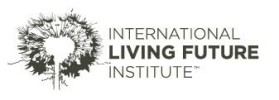Building Standards and Certifications
LEED v4 and v4.1 Building Product Disclosure and Optimization—Material Ingredients, Option 1 & Option 2
Declare has been approved as a compliance pathway for the LEED v4 and v4.1 Building Product Disclosure and Optimization Credit, Option 1. The LEED v4 and v4.1 credits call for the chemical inventory of a product to at least 1000ppm; Declare labels that achieve a declaration status of “LBC Red List Free” or “Declared” fulfill the credit disclosure requirements. Additionally, any fully disclosed “LBC Red List Approved” label and any “LBC Red List Approved” label using the RL-004b Proprietary Ingredients Exception, with a minimum disclosure threshold of 99.9%, meets the LEED v4 and v4.1 Building Product Disclosure and Optimization Credit, Option 1 reporting requirements.
Declare is also a compliance pathway for LEED v4.1 Building Product Disclosure and Optimization Credit, Option 2. Declare labels that achieve Third Party Verification and a declaration status of “LBC Red List Free” fulfill the credit optimization requirements.
International WELL Building Standard
Declare products that are “LBC Red List Free” or “LBC Red List Approved”, have been approved as compliance pathways for the International WELL Building Standard v1 Feature 26 for Enhanced Material Safety which emphasizes healthy material selection to minimize risks.
Declare products can help projects to get up to 3 points in WELL v2 Feature X07 (one per part), depending on the granularity of the declaration (100 ppm vs 1000 ppm) and who conducts it (self declaration vs third-party), but no less than one point.
Red List Free or Red List Approved Declare products may help in Well v2 to reach the asbestos, lead and mercury restrictions (X01), specific chemical restrictions (X05), depending on the product, and materials optimization points (X08 Part 1).
Enterprise Green Communities Criteria
Declare products, with any Declaration Status and either self-disclosed or Third Party Verified, are approved as a compliance pathway for Enterprise Green Communities Criteria (2020) in the Materials Category, Criterion 6.1 Ingredient Transparency for Material Health. Declare products that are Third Party Verified and are “LBC Red List Free”, or “LBC Red List Approved” with RL-004b Proprietary Ingredients as the only Declare Program Exception used, are approved as a compliance pathway for Criterion 6.3 Chemical Hazard Optimization. The Declare database includes a filter, which allows manufacturers to self-select whether they comply with the Mandatory and Optional requirements outlined in Criterion 6.4 Healthier Materials Selection. Declare labels additionally disclose information regarding VOC content and VOC emissions in relation to SCAQMD and CDPH requirements that correlate to the requirements of Criterion 6.4 Healthier Material Selection. Declare labels with reported embodied carbon and a publicly available EPD can qualify for Criterion 6.5 Environmentally Responsible Material Selection. Finally, the final assembly location(s) of a Declare product can help project teams pursue Criterion 6.7 Regional Materials.
Procurement Guidelines
United States Environmental Protection Agency (EPA) Recommendations to Federal Purchasers
Declare is recognized by the US EPA in its Recommendations of Specifications, Standards, and Ecolabels for Federal Purchasers. The recommendations, which help federal purchasers identify and procure environmentally sustainable products and services, include Declare as a recommended standard for a range of low-emitting materials, including carpet, flooring products, furniture, and interior latex paint.
Chemicals of Concern Lists
European Union Substances of Very High Concern (SVHC) List and Substitute It Now (SIN) List
Manufacturers can opt-in to an optional screening of a product’s disclosed chemicals against two chemicals of concern lists used primarily in the European Union. The REACH SVHC Candidate List represents substances deemed Substances of Very High Concern (SVHCs) by the European Chemicals Agency (ECHA) due to meeting several criteria related to hazard and toxicity, described in REACH Article 57. When ECHA identifies a substance as an SVHC and includes it in the Candidate List, this can trigger certain legal obligations for the importers, producers and suppliers of an article that contains such a substance. The ChemSec SIN (Substitute It Now) List is a list of hazardous chemicals that are used in a wide variety of articles, products and manufacturing processes around the globe. The SIN abbreviation – Substitute It Now – implies that these chemicals should be removed as soon as possible as they pose a threat to human health and the environment. The SIN List is developed by the non-profit ChemSec in close collaboration with scientists and technical experts, as well as an advisory committee of leading environmental, health, consumer organisations.
Product Databases
mindful MATERIALS
A group of leading architecture firms created the mindful MATERIALS initiative to provide a simple platform for manufacturers to communicate transparency and optimization for their products, while also providing designers a single place to search for materials. Declare product information is directly entered into the mindful MATERIALS database.
Need more help with this?
Don’t hesitate to contact us here.



